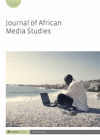
Full text loading...
 , Farid Ladjouzi2
, Farid Ladjouzi2
This article aims to explore the creative practices of young Algerian Internet users related to the production of religious content within the context of the protest movement post 22 February 2019. It questions the place of the Islamic religion in the Algerian protests in the light of religious redocumentarized contents on Facebook (photos). The research is based on the methodological approach of redocumentarization linked with information literacy practices. The results highlight two aspects. Spirituality and faith instilled by redocumentarized photos of religious nature play a catalytic and fuelling role in this popular movement. The Algerian youth information literacy represents the beginning of digital citizen participation.

Article metrics loading...

Full text loading...
References


Data & Media loading...

Publication Date:
https://doi.org/10.1386/jams_00014_1 Published content will be available immediately after check-out or when it is released in case of a pre-order. Please make sure to be logged in to see all available purchase options.